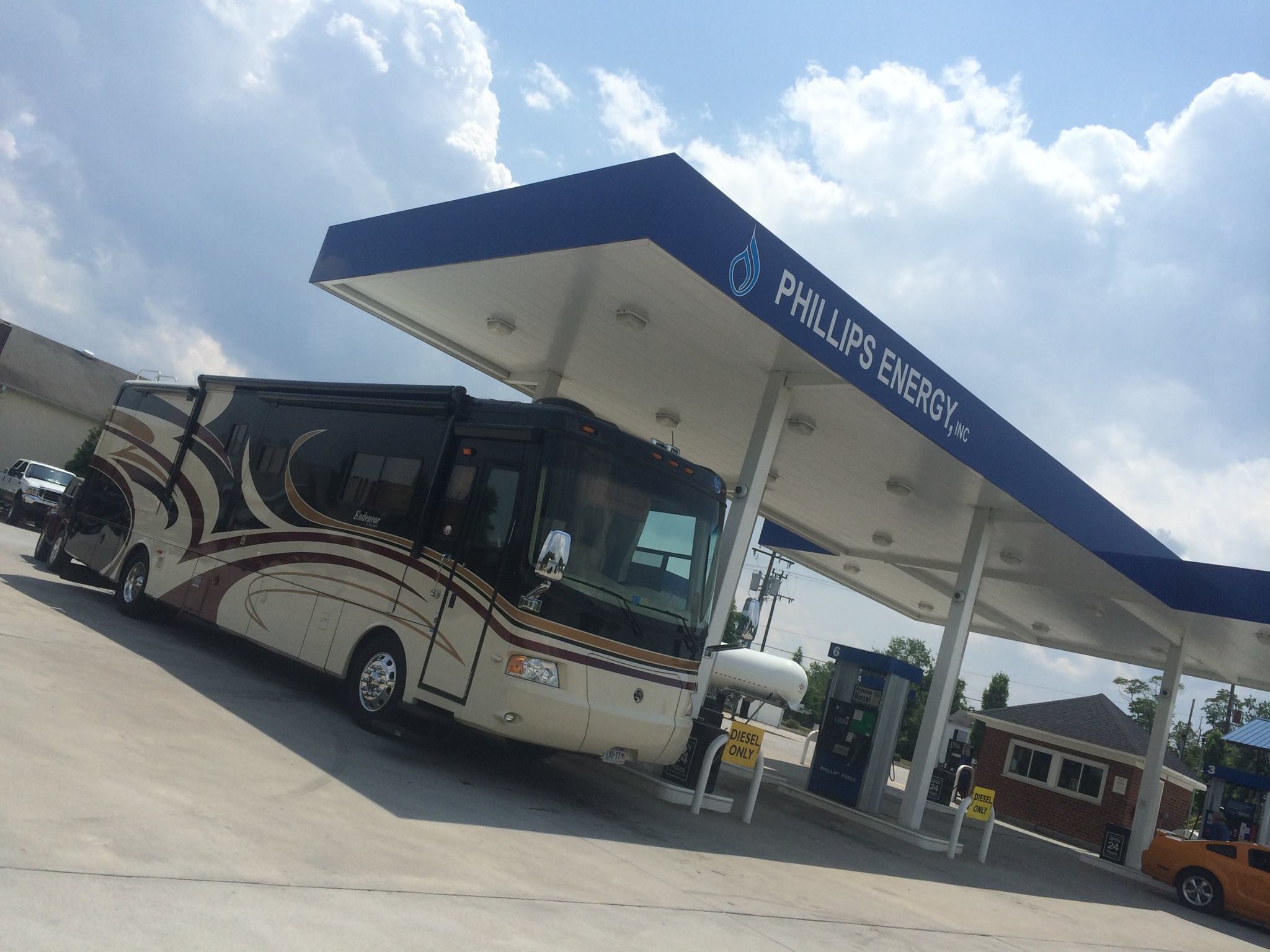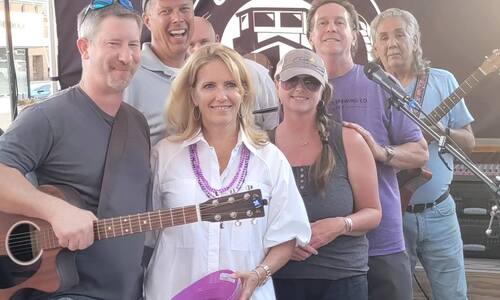Propane and Your RV: What You Need to Know

Millions of people enjoy the freedom, flexibility, and comforts of recreational vehicle travel – including a lot of our Phillips Energy friends! But, along with their unique privileges, RVs come with unique maintenance needs that can become complex when RVs are rented, resold, rebuilt, or used by many parties. Ultimately you are your best protection. Whether you’re a long-time owner or first-time traveler, it’s important to know about your RV’s propane system.
Take a few minutes to read through these tips and important safety reminders courtesy of the Propane Education & Research Council.
The RV Propane System
Your propane system (liquefied petroleum gas or LP gas system) is a very important part of your RV. It can provide heat and hot water, power your stove and refrigerator, and fuel barbecue grills or other small appliances.
There are two basic types of propane containers and systems:
- Portable cylinders
- Permanently installed tanks
Travel trailers, folding camping trailers, and fifth-wheel units use two portable cylinders, which are positioned vertically upright and mounted to the outside front or back of the RV. Motor homes use a single, permanently installed tank, positioned horizontally, and located underneath the cabin, near the entryway. Regardless of container type, all refilling, repair, or replacement must be done by a trained service technician.
RV Modifications
Over the lifetime of an RV, modifications and enhancements to the propane system may have been made by the current or previous owners. Make sure you are aware of these enhancements and modifications. Talk to a trained service technician to find out if any special safety or maintenance instructions are required.
While you may do touchups to your RV from time to time, do not paint propane cylinders, valves, or mounting hardware. This may mask important service issues, affect valves, or result in system failure.
Make sure your system is inspected at least annually by a trained service technician. Their extensive training enables them to detect incorrect tank pressure, leaks, or other potential hazards, and address them properly.
Do not connect your propane piping to another gas source or attempt to repair any propane-related component yourself.
Before You Go
In addition to checking your propane fuel gauge, you’ll want to follow these quick tips:
Inspect propane cylinders and holding mechanisms for signs of rust, corrosion, fatigue, or wear. For permanently installed tanks, check the brackets and mounting hard ware, as well. Have a trained service technician check out any issues.
If you are bringing additional propane cylinders, make sure they are stored secure, upright, and in a well- ventilated area.
Inspect connections leading to your propane appliances for frays or damage.
Make sure your RV has at least one Class BC fire extinguisher and operational propane, carbon monoxide, and smoke detectors. If you need to replace or install a new detector, be sure to follow the manufacturer’s instructions regarding installation, location and maintenance. EXIT THE VEHICLE IMMEDIATELY IF ANY OF THESE DETECTORS GO OFF.
It’s a good idea to review your RV owner’s manual and appliance manuals before you go, and follow their instructions. If you do not have copies, contact your RV manufacturer or dealer. If you have received any recall notices on appliances—or anything in your RV—have your vehicle serviced right away.
On the Road
Most RV refrigerators can keep food and beverages cold during several hours of travel without a power source. It is recommended that propane systems be turned off while driving.
Shut off propane supply valves, pilot lights, ignitors, and appliances, and have everybody exit the vehicle during refueling.
Extinguish all smoking materials any time you are near tanks, filling stations, or other equipment where gasoline or propane may be present.
Turn off propane supply valves before entering tunnels or enclosed areas. Be sure to follow any postings around restricted areas, such as military bases.
At Campgrounds and Destinations
Propane is a great resource to cook food, cool beverages, or provide warmth/power at rest stops and campgrounds. Keep in mind these key safety considerations.
Open a window and turn on your exhaust fan when using your stove for cooking.
Do not use stove for comfort heat, or any appliances for means other than their intended use.
Portable fuel-burning equipment including wood, charcoal, and propane grills should not be used inside the RV or near the entryway. This can cause fires or carbon monoxide poisoning.
Keep your vehicle a safe distance away from any heat source, such as grills or fire pits. Keep propane tanks and cylinders at least 10 feet away from heat sources.
Winterizing/Storage
When storing your vehicle, turn off all propane appliances and power and keep vents open. If you store your vehicle in an enclosed area, remove all portable cylinders and store them securely in an upright position, in a well-ventilated area. Never store a cylinder indoors or in an enclosed area such as a basement, garage, or shed. You’ll want to conduct a thorough inspection of your RV when you take it out of storage.
Carbon Monoxide and Your Safety
You can’t taste or smell carbon monoxide, but it is a dangerous gas. High levels of carbon monoxide can cause sickness or, in extreme cases, death. High levels can come from appliances that are not operating correctly or properly vented.
To reduce the risk of carbon monoxide poisoning, have a trained service technician check your propane system annually. Also, frequently check exterior vents and clear any debris, insect nests, or other items that may restrict venting.
Never use portable heaters or other appliances in your RV unless they are approved for indoor use. Follow manufacturer instructions regarding operation and ventilation requirements.
If you or a family member suspect carbon monoxide is present, get everyone out of the vehicle and call 911 or the local fire department.
